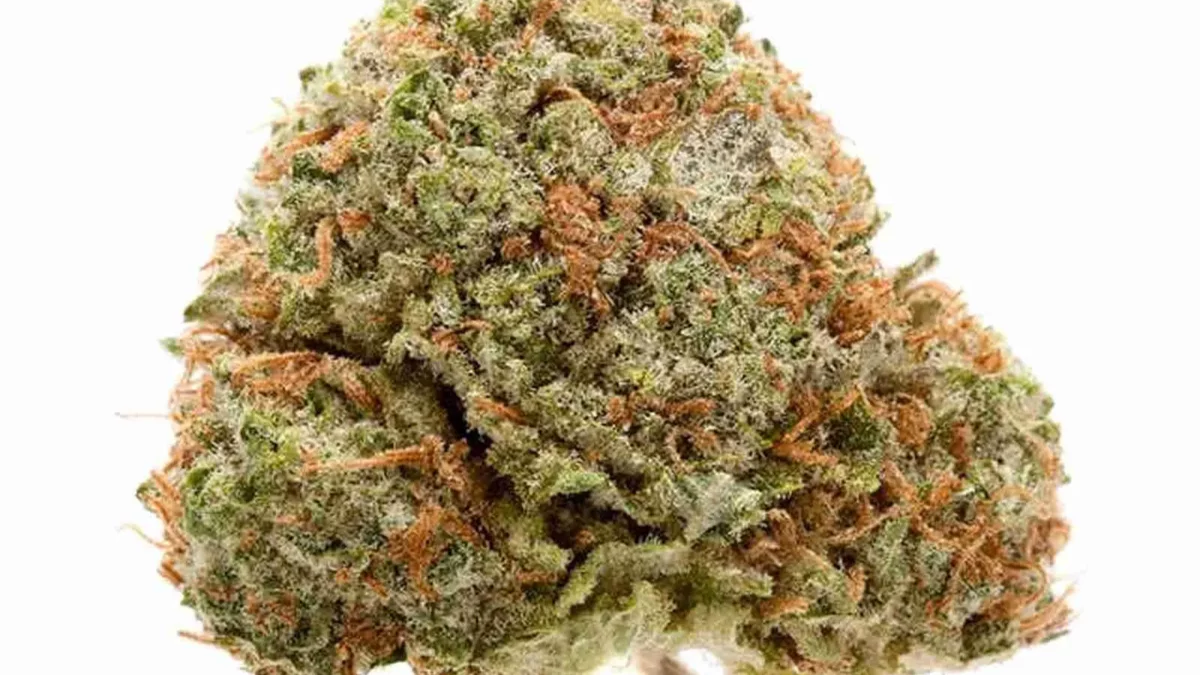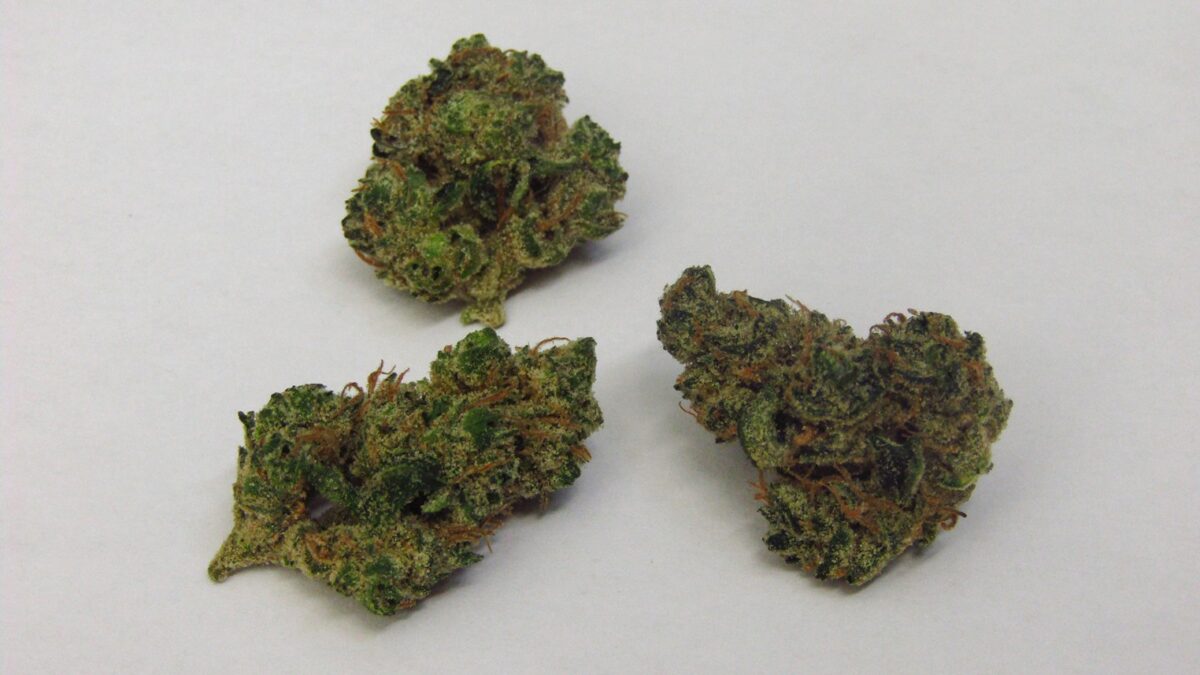
Introduction
Gibsonburg Glue, an increasingly popular hybrid cannabis strain, offers a complex profile of effects, flavors, and aromas that appeal to a wide range of users. With its intriguing lineage and distinctive characteristics, Gibsonburg Glue has become a noteworthy entry in the cannabis market. This comprehensive guide explores the strain’s origins, physical traits, effects, medicinal benefits, cultivation techniques, and potential side effects. Additionally, a section dedicated to frequently asked questions provides further insights to enhance understanding and enjoyment of this strain.
Origins and History
Gibsonburg Glue is a hybrid strain known for its rich lineage and robust genetic profile. It is a cross between two renowned strains: Gorilla Glue #4 and a less widely known, yet significant, parent strain. Gorilla Glue #4, a prominent component of Gibsonburg Glue’s genetics, is celebrated for its potent effects and high THC content. Originating from a mix of Chem’s Sister, Sour Dubb, and Chocolate Diesel, Gorilla Glue #4 has gained acclaim for its sticky resin production and powerful, well-rounded effects.
The second parent strain in Gibsonburg Glue’s lineage introduces additional unique attributes to the hybrid. Although not as widely recognized as Gorilla Glue #4, this strain contributes specific characteristics that complement and enhance the overall profile of Gibsonburg Glue. The blend of these two strains results in a hybrid that retains the strength and resilience of its parents while offering distinct qualities of its own.
Characteristics and Appearance
Gibsonburg Glue is distinguished by its striking appearance and appealing physical traits. The buds are typically dense and well-formed, with a rounded, compact structure. The color of the buds ranges from deep green to various shades of purple, often highlighted by vibrant orange pistils that stand out against the rich backdrop. A generous coating of trichomes covers the buds, giving them a frosty and resinous appearance. This layer of trichomes indicates the strain’s potency and contributes to its sticky texture, which is characteristic of its Gorilla Glue #4 parentage.
The aroma of Gibsonburg Glue is a complex blend that captures the essence of its lineage. Users often describe the scent as a mix of earthy, pine, and citrus notes, with a hint of sweetness and a subtle diesel undertone. This aroma profile reflects the influence of both parent strains, combining the earthy and pungent qualities of Gorilla Glue #4 with the fresh, citrusy notes of its other parent. The flavor profile mirrors the aroma, offering a well-rounded taste experience that includes earthy, pine, and citrus elements with a touch of sweetness.
Effects and Benefits
Gibsonburg Glue is known for its balanced and versatile effects, which cater to both recreational and medicinal users. The strain typically produces a euphoric and uplifting high, accompanied by a sense of relaxation and mental clarity. The initial effects are often cerebral, enhancing mood and promoting creativity. This mental stimulation is followed by a gentle body relaxation that can ease physical tension and stress.
Medically, Gibsonburg Glue offers several potential benefits. Its mood-enhancing effects can be beneficial for individuals dealing with depression or anxiety. The strain’s ability to provide relaxation can help manage chronic pain, including muscle aches and joint discomfort. Additionally, the calming properties of Gibsonburg Glue may aid in improving sleep quality for those with insomnia or other sleep-related issues. The strain also has appetite-stimulating effects, making it useful for individuals experiencing appetite loss or nausea.
The versatility of Gibsonburg Glue’s effects makes it suitable for a range of uses, from enhancing recreational activities to addressing specific medical conditions. The balanced nature of the strain allows users to enjoy a pleasant experience without overwhelming sedative effects or excessive stimulation.
Cultivation and Growing Tips
Cultivating Gibsonburg Glue requires attention to specific needs to ensure optimal growth and yield. The strain can be grown both indoors and outdoors, with particular conditions that support its development. For indoor cultivation, maintaining a temperature range of 70 to 80°F (21 to 27°C) is ideal. This temperature range helps create an environment conducive to healthy plant growth. Humidity levels should be kept between 40 to 50% during the vegetative stage and reduced to 30 to 40% during the flowering stage to prevent mold and mildew.
Lighting is a crucial factor for growing Gibsonburg Glue. The strain requires a significant amount of light, with a preference for a 12/12 light cycle during the flowering stage. Indoor growers can use high-intensity discharge (HID) lights or full-spectrum LEDs to provide the necessary light levels for optimal development. Proper lighting ensures robust growth and enhances the quality of the final product.
Gibsonburg Glue can be grown in various mediums, including soil, hydroponics, and coco coir. Soil cultivation is straightforward and suitable for beginners, offering a natural flavor profile. Hydroponics allows for faster growth and potentially higher yields, but it requires precise control over nutrients and pH levels. Coco coir provides a balance between soil and hydroponics, offering good aeration and nutrient retention.
The flowering period for Gibsonburg Glue typically lasts 8 to 10 weeks. Harvesting at the right time is crucial for achieving the desired effects and preserving the strain’s quality. To determine the optimal harvest time, monitor the trichomes on the buds. When most trichomes are milky, the strain will offer a more euphoric and stimulating high. If some trichomes have turned amber, the strain will provide a more relaxing and sedative effect. Proper curing techniques are also important to maintain the strain’s potency and flavor.
Potential Risks and Side Effects
While Gibsonburg Glue is generally well-tolerated, some users may experience side effects. The most common side effect is dry mouth, also known as cottonmouth. Staying hydrated can help alleviate this discomfort. Dry eyes are another potential side effect, which can be managed with moisturizing eye drops. Some users may also experience dizziness or lightheadedness, particularly if consuming large quantities of the strain. To minimize potential side effects, it is advisable to start with a small dose and gradually increase as needed, allowing time to assess personal tolerance.
FAQs
What is the THC/CBD content of Gibsonburg Glue?
Gibsonburg Glue typically has a THC content ranging from 18% to 24%, making it a potent strain. The CBD content is relatively low, usually below 1%. The high THC levels contribute to the strain’s powerful effects and therapeutic benefits.
Is Gibsonburg Glue suitable for beginners?
Gibsonburg Glue can be suitable for beginners, but its potency means that new users should start with a smaller dose to gauge their tolerance. The strain provides a balanced experience, making it accessible for those who are new to cannabis but comfortable with its effects.
How does Gibsonburg Glue compare to other Glue strains?
Gibsonburg Glue shares similarities with other Glue strains, such as Gorilla Glue #4, in terms of its sticky texture and potency. However, it has its unique characteristics due to its specific lineage and breeding. While other Glue strains may emphasize different traits or effects, Gibsonburg Glue offers a distinctive combination of earthy, pine, and citrus flavors with balanced effects.
Can Gibsonburg Glue be used for medical purposes?
Yes, Gibsonburg Glue has several potential medicinal benefits. It can help alleviate stress, manage pain, enhance mood, stimulate appetite, and improve sleep quality. As with any medical use of cannabis, it is important to consult with a healthcare provider to ensure that it aligns with individual health needs and conditions.
How should I store Gibsonburg Glue to maintain its freshness?
To maintain the freshness of Gibsonburg Glue, store it in an airtight container, away from direct light and heat. A cool, dark place is ideal for preserving the strain’s potency and flavor. Proper storage helps prevent degradation and maintains the quality of the cannabis.
What are the best methods for consuming Gibsonburg Glue?
Gibsonburg Glue can be consumed in various ways, including smoking, vaping, or using it in edibles. Each method offers different effects and experiences. Smoking or vaping provides immediate effects, while edibles offer a longer-lasting experience with a different onset time.
What common issues should I be aware of when growing Gibsonburg Glue?
Common issues when growing Gibsonburg Glue include pest infestations, mold, and nutrient deficiencies. Regular monitoring and maintaining optimal growing conditions, such as proper temperature, humidity, and light levels, can help prevent these problems. Ensuring good ventilation and using high-quality nutrients are also important for a successful grow.
Conclusion
Gibsonburg Glue is a standout strain in the cannabis community, offering a blend of desirable traits from its notable parentage. Its balanced effects, distinctive flavor profile, and versatile medicinal benefits make it a valuable choice for both recreational and medicinal users. Understanding its origins, characteristics, and cultivation requirements enhances the appreciation of Gibsonburg Glue and ensures a fulfilling experience for growers and consumers alike. By paying attention to its specific needs and potential side effects, users can fully enjoy the benefits of this exceptional strain and incorporate it effectively into their cannabis repertoire.
4o mini
- Retinol Peel Near Dormansland, Surrey - May 31, 2025
- Skin Treatment & Skincare Consultations Near Thornton Heath, Surrey - May 30, 2025
- Lip Filler How Long Does Bruising Last - May 30, 2025

